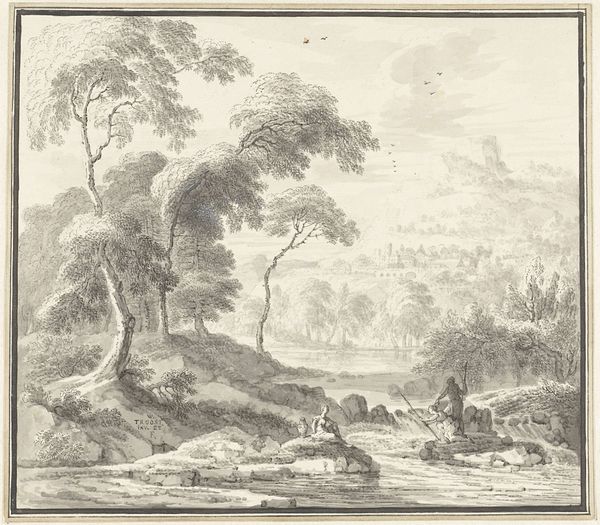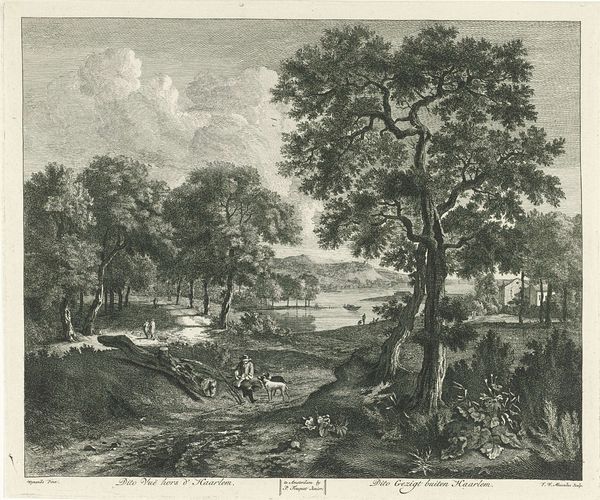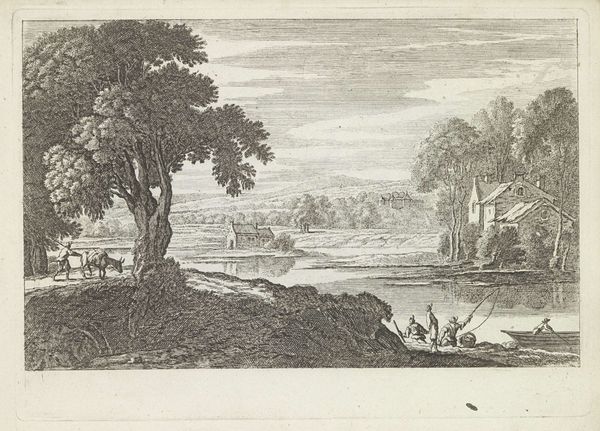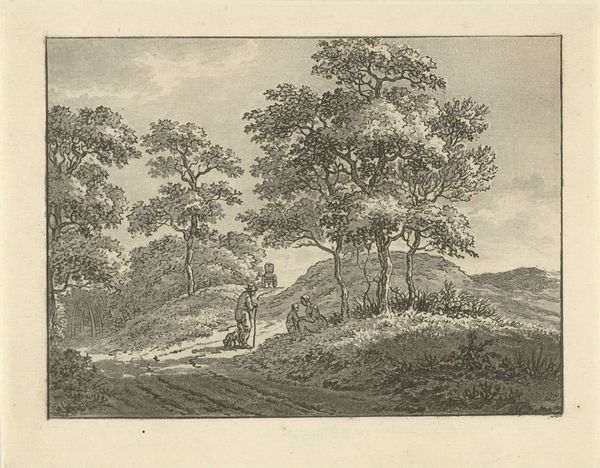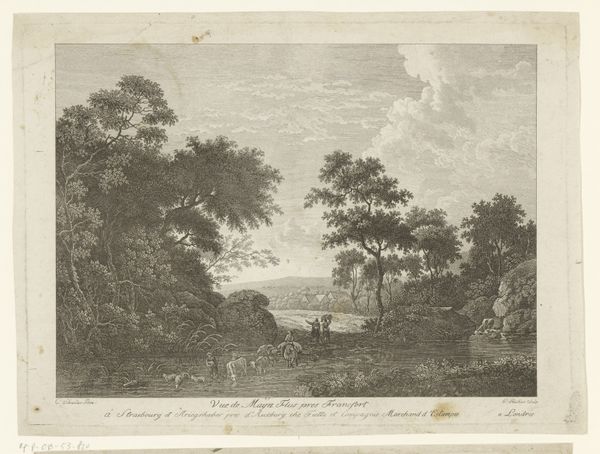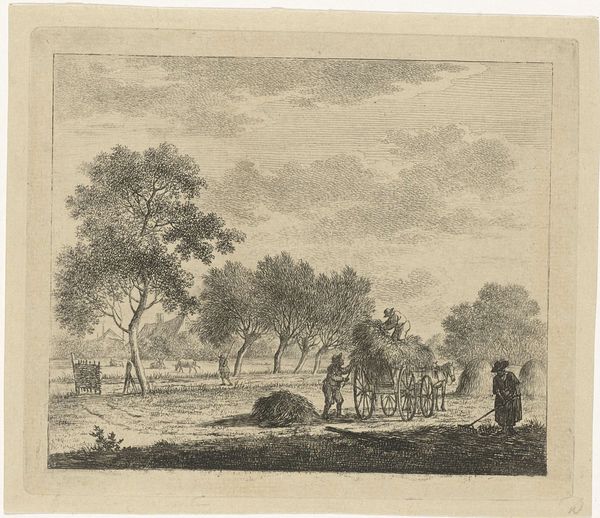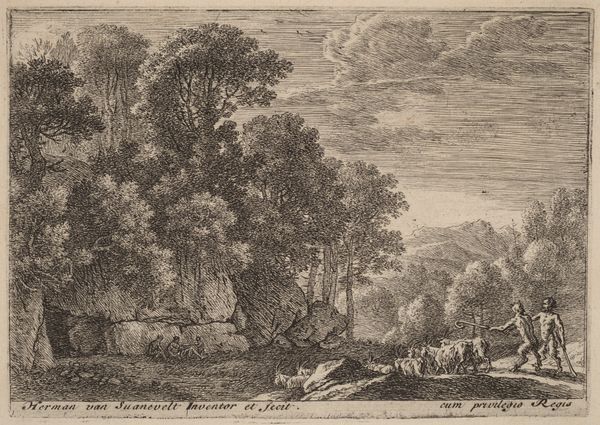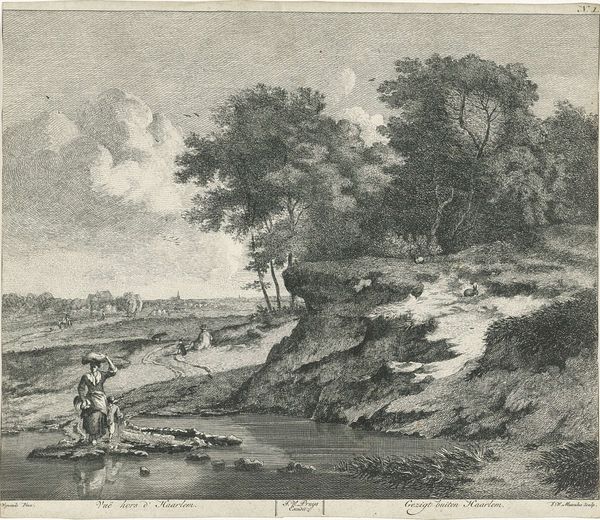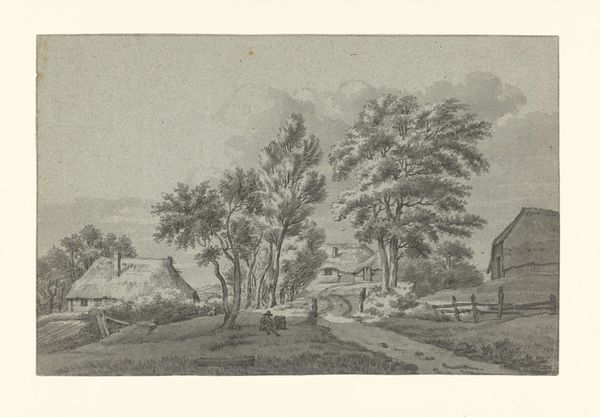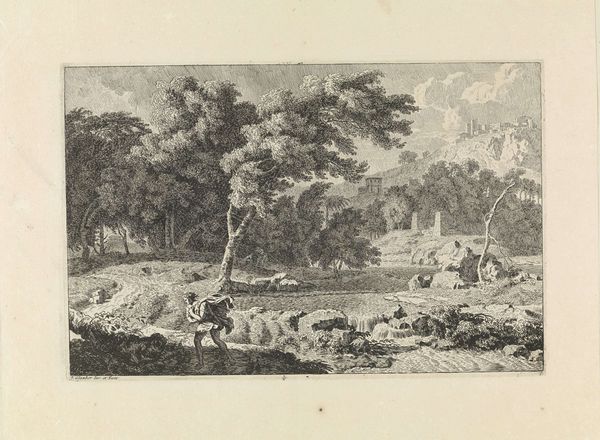
Dimensions: height 260 mm, width 318 mm
Copyright: Rijks Museum: Open Domain
Editor: This engraving, "Duinlandschap met rustende jagers," or "Dune Landscape with Resting Hunters," by F.W. Musculus, probably from the late 18th century, feels quite pastoral. The texture achieved with engraving is very interesting. What do you see in the piece? Curator: For me, it’s fascinating to consider the materiality of this image and its context of production. As an engraving, this landscape existed within a system of reproduction, dissemination, and, ultimately, consumption. Editor: So, it's less about the "art" and more about its circulation? Curator: Precisely. Consider the engraver's labor: the skilled hand meticulously carving lines into the metal plate. What socio-economic forces allowed for this leisure scene and its subsequent distribution? Was it a commentary on land ownership or the changing perception of landscape? Editor: That's a perspective I hadn't considered. I was focusing on the picturesque scenery itself. Curator: But isn't that scenery itself a constructed image, one circulated widely through prints? We need to ask how this particular way of seeing was produced, disseminated, and what purpose it served for its consumers. Think of the paper itself, and the engraver as laborer creating commodities. Editor: So, the means of production shape how we even see nature? Curator: Exactly. It's about acknowledging that the aesthetic experience isn't separate from the material conditions that made it possible. What have you observed? Editor: I hadn’t considered the piece as an artifact embedded in its socio-economic context before, just its aesthetic value. I now think I need to reconsider everything from that perspective. Curator: That's great. Focusing on materiality can unlock many interpretations.
Comments
No comments
Be the first to comment and join the conversation on the ultimate creative platform.
